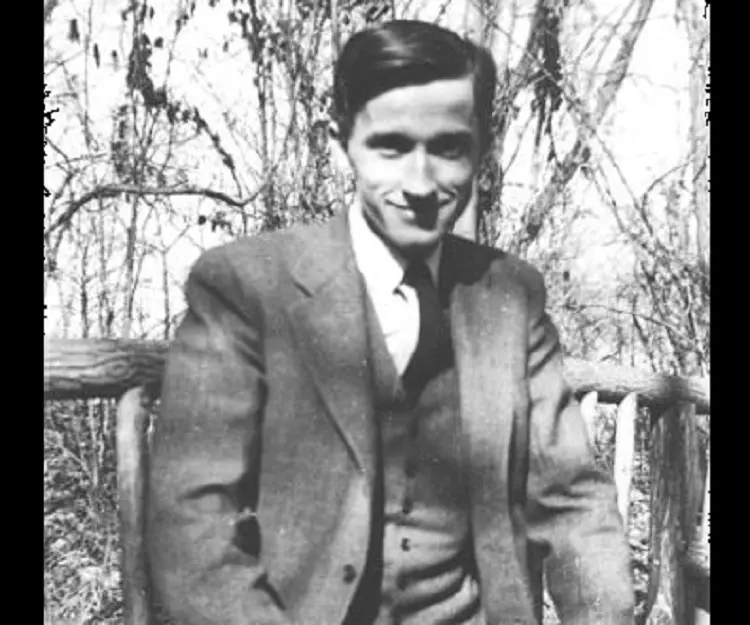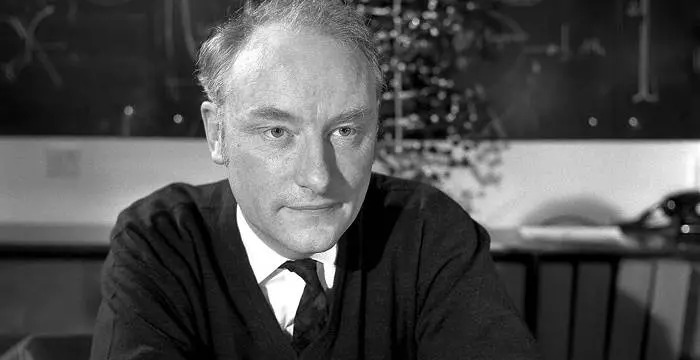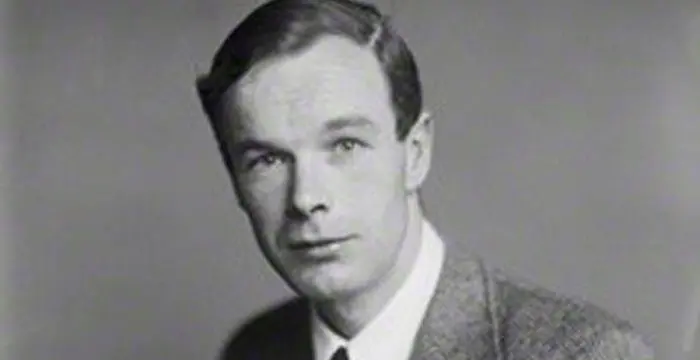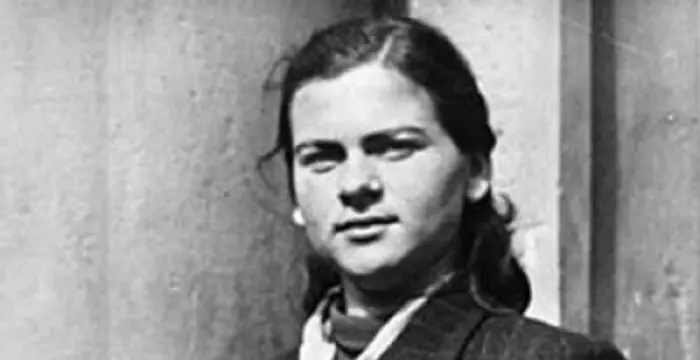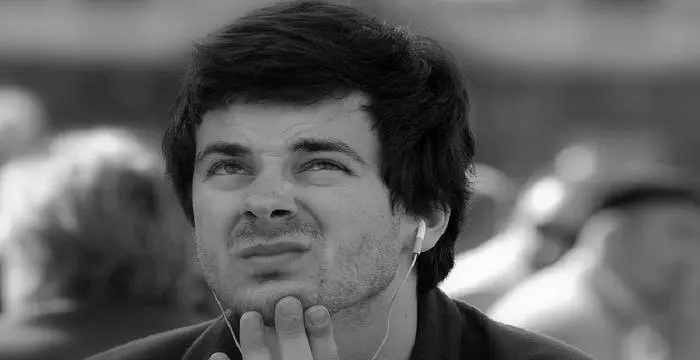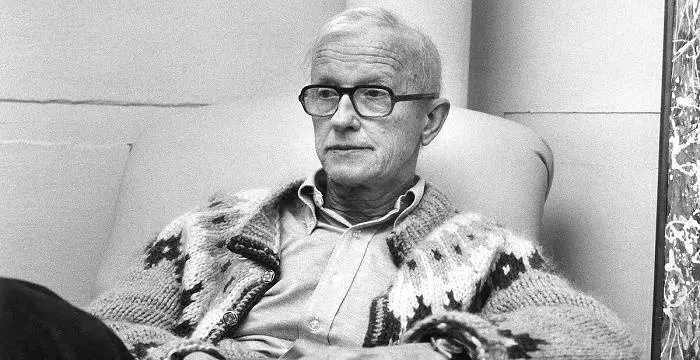
Max Delbrück - Biophysicists, Timeline and Family
Max Delbrück's Personal Details
Max Delbrück was a German born American biophysicist who initiated the study of molecular biology
| Information | Detail |
|---|---|
| Birthday | September 4, 1906 |
| Died on | March 9, 1981 |
| Nationality | German |
| Famous | Scientists, Biophysicists |
| Known as | Max Delbruck |
| Universities |
|
| Birth Place | Berlin |
| Gender | Male |
| Father | Hans Delbrück |
| Mother | Carolina Thiersch |
| Sun Sign | Virgo |
| Born in | Berlin |
| Famous as | Biophysicist |
| Died at Age | 74 |
// Famous Scientists
Juliane Koepcke
Juliane Koepcke is a German-Peruvian biologist, who was the lone survivor among the 92 passengers and crew of the ill-fated LANSA Flight 508 that crashed in the Peruvian rainforest on 24 December 1971. Know more about her life in this biography.
Henry Cavendish
Henry Cavendish was a theoretical chemist and physicist, renowned for discovery of hydrogen and calculation of the mass of earth. To know more about his childhood, profile, timeline and career read on
Konstantin Tsiolkovsky
Konstantin Tsiolkovsky was a Russian rocket scientist and a pioneer of astronautics. This biography provides detailed information about his childhood, family, personal life, career, achievements, etc.
Max Delbrück's photo
Who is Max Delbrück?
Max Delbrück was a German born American biophysicist who initiated the study of molecular biology. He won the prestigious Nobel Prize, together with other members of the ‘Phage Group’ - Alfred Day Hershey and Salvador Luria, for their work on bacteriophages. Born in a family of academicians, he was interested in science since childhood and grew up to receive a Ph.D. in physics from the University of Göttingen. When he joined the Kaiser Wilhelm Institute for Chemistry as a research assistant, his interest in bacteriophages was aroused. Disapproving of the Nazi agenda, he immigrated to the United States in 1937, serving as a faculty member of the California Institute of Technology and later, the Vanderbilt University. Eventually, he became a U.S. citizen. He formed the Phage Group with Luria and Hershey and the trio went on to win the 1969 Nobel Prize in Physiology or Medicine “for their discoveries concerning the replication mechanism and the genetic structure of viruses”. His work encouraged new findings in molecular biology by other scientists, especially the breakthrough discovery that viruses contain the genetic material Deoxyribonucleic Acid (DNA), and the eventual understanding of the structure of DNA itself.
// Famous Biophysicists
James Watson
James Watson is an American molecular biologist and geneticist who played a crucial role in the discovery of the molecular structure of D.N.A. This biography provides detailed information about his childhood, life, achievements, works & timeline
Francis Crick
Francis Crick was an English molecular biologist, biophysicist and neuroscientist, who received the Nobel Prize for Medicine. This biography profiles his childhood, life, career, achievements and timeline.
Alan Lloyd Hodgkin
Sir Alan Lloyd Hodgkin was an English biophysicist and a physiologist who received the Nobel prize in Physiology or Medicine in 1963. This biography profiles his childhood, life, research, achievements and timeline.
Childhood & Early Life
Max Delbrück was born on 4 September 1906, in Berlin, Germany. He belonged to a family of academicians; his father, Hans Delbrück was Professor of History at the University of Berlin, while his maternal great-grandfather was the famous chemist, Justus von Liebig.
Growing up in Berlin he witnessed both, the prosperity before and the despair after the First World War. As a child, he was interested in mathematics and astronomy.
In 1924, he registered with the University of Tübingen, but changed colleges several times before joining the University of Göttingen. In college, he changed his subject from astrophysics to theoretical physics.
Career
In 1929, Delbrück received his PhD in physics from the University of Göttingen, after which he spent three years doing postdoctoral studies in England, Switzerland, and Denmark. During this time, he met Wolfgang Pauli and Niels Bohr, and his interactions with them aroused his interest in biology.
In 1932, he joined the Kaiser Wilhelm Institute for Chemistry in Berlin as a research assistant to Lise Meitner, and eventually took an interest in bacteriophages. He continued at the institute for the next five years, and progressed with his move from physics to biology.
During this period, he wrote several papers including an important one in 1933 on gamma rays. However, this paper lacked a concrete conclusion. Two decades later, Hans Bethe confirmed his observation and named it ‘Delbruck Scattering’.
In 1934, he became a member of a group of theoretical physicists and biologists who held intellectual private meetings. These meetings resulted in a paper on mutagenesis which eventually influenced the development of molecular biology in the late 1940s.
In 1937, a Rockefeller Foundation fellowship took him to the United States where he researched further on genetics and biochemistry at the California Institute of Technology (Caltech) in Pasadena.
A year later in 1938, he met a fellow biologist Emory Ellis, and together they explored bacteriophages and a mathematical system to analyze the results. They co-authored ‘The Growth of Bacteriophage’ in 1939.
His fellowship expired in 1939. Since World War II had begun and he disapproved of the Nazi regime, he decided to stay back in the US. He joined the faculty of Vanderbilt University in Nashville, Tennessee where he taught physics from 1940 to 1947.
In the meantime, he continued his phage research at the Cold Spring Harbour Laboratory on Long Island in New York. In 1941, he met Italian physician Salvador Luria from Indiana University, who was conducting bacteriophage research.
By 1943, their teamwork became famous in the scientific community. Their landmark paper, ‘Mutations of Bacteria from Virus Sensitivity to Virus Resistance’ is now considered the foundation of bacterial genetics.
Also in 1943, he met microbiologist Alfred Hershey from Washington University and the ‘Phage Group’ conducted its first informal meeting on research involving bacteriophages.
In the Phage Treaty of 1944, the Phage Group defined some rules to make sure that findings on bacteriophages from different laboratories could be easily shared, evaluated and ascertained.
In 1945, he became a U.S. citizen and organized the first Phage Course at Cold Spring Harbour. The course eventually became a yearly episode attracting biologists, physicists and geneticists from all over the world.
In 1946, Delbrück's and Hershey's laboratories individually discovered that different bacteriophage strains that invade the same bacterial cell could randomly exchange genes to form new and unique viral strains. They named the phenomenon ‘Genetic Recombination’.
In 1947, he returned to Caltech as a professor of biology and remained there for the rest of his career. His 1949 lecture, ‘A Physicist Looks at Biology’ was reminiscent of his scientific journey.
In the early 1950s, he took up research on sensory perception, exploring the relationship between fungus, Phycomyces, and light. He formed a Phycomyces Group (alike the Phage Group) to collect and consider ideas.
Meanwhile, his work continued to influence bacteriophage research by other scientists, especially the determination of the three-dimensional, double-helix structure of DNA in 1953 by molecular biologist Francis Crick and physicist James Watson.
All through the 1950s and 1960s, researchers and students thronged him for his guidance and critical overview of their papers. In 1961, he took a two-year leave of absence from Caltech to help set up the Institute of Molecular Genetics at University of Cologne, Germany.
In 1969, the Phage Group received the Nobel Prize in physiology or medicine for their work in bacteriophages, particularly the mechanism of replication in viruses and their genetic structure. The committee also noted that “The honour in the first place goes to Delbrück who transformed bacteriophage research from vague empiricism to an exact science….”
In the years following the Nobel Prize win, Delbrück continued his research on sensory perception. He retired from the faculty of Caltech in 1977.
Major Works
In 1933, Delbrück wrote a significant paper on gamma rays, albeit without a concrete conclusion. It explored gamma rays' scattering by Coulomb field's polarization of vacuum. Two decades later, Hans Bethe confirmed the findings and named it ‘Delbruck Scattering’.
In their landmark paper of 1943, ‘Mutations of Bacteria from Virus Sensitivity to Virus Resistance’, Delbrück and Luria confirmed that phage-resistant bacterial strains developed through natural selection: once infected with a bacteriophage, the bacterium spontaneously changes so that it becomes immune to the invading virus. This paper is now regarded as the foundation of bacterial genetics.
In 1946, Delbrück's and Hershey's laboratories separately discovered that different bacteriophage strains on invading the same bacterial cell could randomly exchange genes to form new and unique viral strains. They named the phenomenon ‘Genetic Recombination’.
Awards & Achievements
In 1969, the Phage Group, i.e. Delbrück, Luria and Hershey received the prestigious Nobel Prize in physiology or medicine, for their immense contribution to the field of molecular biology, particularly the mechanism of replication in viruses and their genetic structure.
In 1969, Delbrück along with Luria was awarded the Louisa Gross Horwitz Prize by the Columbia University.
Personal Life & Legacy
Max Delbrück married May Bruce in 1941 and had four children together - Jonathan and Nicola, born in the mid-1940s and Tobias and Ludina, born in the early 1960s.
In his early life, Nazism was strongest in Germany. He was quite against their agenda and took up US citizenship in 1945.
His brother, Justus, and sister, Emmi however, stayed back in Germany to actively fight against the Nazi. Later, his brothers-in-law Dietrich Bonhoeffer and Klaus Bonhoeffer also joined the resistance. Eventually, they were tried by the People’s Court for plotting to assassinate Hitler and were executed in 1945.
He died of cancer on 9 March 1981, in Pasadena.
Trivia
The Max Delbruck Prize named in his honour was formerly known as the biological physics prize, and was awarded by the American Physical Society.
// Famous German peoples
Jordan Carver
Jordan Carver is a famous German model. Let’s take a close look at her personal life, including her age, career, net worth, achievements and some fun facts.
Jürgen Klopp
Jürgen Klopp is a German football manager, and a former professional football player. Check out this biography to know more about his childhood, family, personal life, etc.
Irma Grese
Irma Grese was a notorious German Nazi concentration camp guard during the Second World War. This biography profiles her childhood, life, horrifying acts, death and other facts.
Max Delbrück's awards
| Year | Name | Award |
|---|---|---|
Other | ||
| 0 | 1969 - Nobel Prize in Physiology or Medicine | |
| 0 | 1969 - Louisa Gross Horwitz Prize | |
Max Delbrück biography timelines
- // 4th Sep 1906Max Delbrück was born on 4 September 1906, in Berlin, Germany. He belonged to a family of academicians; his father, Hans Delbrück was Professor of History at the University of Berlin, while his maternal great-grandfather was the famous chemist, Justus von Liebig.
- // 1924In 1924, he registered with the University of Tübingen, but changed colleges several times before joining the University of Göttingen. In college, he changed his subject from astrophysics to theoretical physics.
- // 1929In 1929, Delbrück received his PhD in physics from the University of Göttingen, after which he spent three years doing postdoctoral studies in England, Switzerland, and Denmark. During this time, he met Wolfgang Pauli and Niels Bohr, and his interactions with them aroused his interest in biology.
- // 1932In 1932, he joined the Kaiser Wilhelm Institute for Chemistry in Berlin as a research assistant to Lise Meitner, and eventually took an interest in bacteriophages. He continued at the institute for the next five years, and progressed with his move from physics to biology.
- // 1933During this period, he wrote several papers including an important one in 1933 on gamma rays. However, this paper lacked a concrete conclusion. Two decades later, Hans Bethe confirmed his observation and named it ‘Delbruck Scattering’.
- // 1933In 1933, Delbrück wrote a significant paper on gamma rays, albeit without a concrete conclusion. It explored gamma rays' scattering by Coulomb field's polarization of vacuum. Two decades later, Hans Bethe confirmed the findings and named it ‘Delbruck Scattering’.
- // 1934In 1934, he became a member of a group of theoretical physicists and biologists who held intellectual private meetings. These meetings resulted in a paper on mutagenesis which eventually influenced the development of molecular biology in the late 1940s.
- // 1937In 1937, a Rockefeller Foundation fellowship took him to the United States where he researched further on genetics and biochemistry at the California Institute of Technology (Caltech) in Pasadena.
- // 1938 To 1939A year later in 1938, he met a fellow biologist Emory Ellis, and together they explored bacteriophages and a mathematical system to analyze the results. They co-authored ‘The Growth of Bacteriophage’ in 1939.
- // 1941In the meantime, he continued his phage research at the Cold Spring Harbour Laboratory on Long Island in New York. In 1941, he met Italian physician Salvador Luria from Indiana University, who was conducting bacteriophage research.
- // 1941Max Delbrück married May Bruce in 1941 and had four children together - Jonathan and Nicola, born in the mid-1940s and Tobias and Ludina, born in the early 1960s.
- // 1943By 1943, their teamwork became famous in the scientific community. Their landmark paper, ‘Mutations of Bacteria from Virus Sensitivity to Virus Resistance’ is now considered the foundation of bacterial genetics.
- // 1943Also in 1943, he met microbiologist Alfred Hershey from Washington University and the ‘Phage Group’ conducted its first informal meeting on research involving bacteriophages.
- // 1943In their landmark paper of 1943, ‘Mutations of Bacteria from Virus Sensitivity to Virus Resistance’, Delbrück and Luria confirmed that phage-resistant bacterial strains developed through natural selection: once infected with a bacteriophage, the bacterium spontaneously changes so that it becomes immune to the invading virus. This paper is now regarded as the foundation of bacterial genetics.
- // 1944In the Phage Treaty of 1944, the Phage Group defined some rules to make sure that findings on bacteriophages from different laboratories could be easily shared, evaluated and ascertained.
- // 1945In 1945, he became a U.S. citizen and organized the first Phage Course at Cold Spring Harbour. The course eventually became a yearly episode attracting biologists, physicists and geneticists from all over the world.
- // 1945In his early life, Nazism was strongest in Germany. He was quite against their agenda and took up US citizenship in 1945.
- // 1945His brother, Justus, and sister, Emmi however, stayed back in Germany to actively fight against the Nazi. Later, his brothers-in-law Dietrich Bonhoeffer and Klaus Bonhoeffer also joined the resistance. Eventually, they were tried by the People’s Court for plotting to assassinate Hitler and were executed in 1945.
- // 1946In 1946, Delbrück's and Hershey's laboratories individually discovered that different bacteriophage strains that invade the same bacterial cell could randomly exchange genes to form new and unique viral strains. They named the phenomenon ‘Genetic Recombination’.
- // 1946In 1946, Delbrück's and Hershey's laboratories separately discovered that different bacteriophage strains on invading the same bacterial cell could randomly exchange genes to form new and unique viral strains. They named the phenomenon ‘Genetic Recombination’.
- // 1947 To 1949In 1947, he returned to Caltech as a professor of biology and remained there for the rest of his career. His 1949 lecture, ‘A Physicist Looks at Biology’ was reminiscent of his scientific journey.
- // 1953Meanwhile, his work continued to influence bacteriophage research by other scientists, especially the determination of the three-dimensional, double-helix structure of DNA in 1953 by molecular biologist Francis Crick and physicist James Watson.
- // 1961All through the 1950s and 1960s, researchers and students thronged him for his guidance and critical overview of their papers. In 1961, he took a two-year leave of absence from Caltech to help set up the Institute of Molecular Genetics at University of Cologne, Germany.
- // 1969In 1969, the Phage Group received the Nobel Prize in physiology or medicine for their work in bacteriophages, particularly the mechanism of replication in viruses and their genetic structure. The committee also noted that “The honour in the first place goes to Delbrück who transformed bacteriophage research from vague empiricism to an exact science….”
- // 1969In 1969, the Phage Group, i.e. Delbrück, Luria and Hershey received the prestigious Nobel Prize in physiology or medicine, for their immense contribution to the field of molecular biology, particularly the mechanism of replication in viruses and their genetic structure.
- // 1969In 1969, Delbrück along with Luria was awarded the Louisa Gross Horwitz Prize by the Columbia University.
- // 1977In the years following the Nobel Prize win, Delbrück continued his research on sensory perception. He retired from the faculty of Caltech in 1977.
- // 9th Mar 1981He died of cancer on 9 March 1981, in Pasadena.
// Famous Virgo Celebrities peoples
Temple Grandin
Temple Grandin is a well-known American writer, autistic activist and animal expert. This biography profiles her childhood, life, achievements, career and timeline
Alex Holtti
Check out all that you wanted to know about Alex Holtti, the famous Danish Viner & YouTuber; his birthday, his family and personal life, his girlfriends, fun trivia facts and more.
Benjamin Atkinson
Benjamin Atkinson is the son of the world-renowned British actor and comedian, Rowan Atkinson. Check out this biography to know about his childhood, family, personal life, including his age, birthday, etc.
Jack Dylan Grazer
Jack Dylan Grazer is an American actor known mainly for his performance in the movie version of ‘Stephen King’s novel ‘It.’ Check out this biography to know about his childhood, family, personal life, birthday, etc.
Ted Williams
Ted Williams was an American baseball player. Read this biography to learn more about his profile, childhood, life and timeline.
Mia Diaz
All about American dancer and actor Mia Diaz, including her age, family life, birthday, boyfriends, net worth, and some fun facts.
Max Delbrück's FAQ
What is Max Delbrück birthday?
Max Delbrück was born at 1906-09-04
When was Max Delbrück died?
Max Delbrück was died at 1981-03-09
Where was Max Delbrück died?
Max Delbrück was died in Pasadena
Which age was Max Delbrück died?
Max Delbrück was died at age 74
Where is Max Delbrück's birth place?
Max Delbrück was born in Berlin
What is Max Delbrück nationalities?
Max Delbrück's nationalities is German
What was Max Delbrück universities?
Max Delbrück studied at University of Göttingen
Who is Max Delbrück's father?
Max Delbrück's father is Hans Delbrück
Who is Max Delbrück's mother?
Max Delbrück's mother is Carolina Thiersch
What is Max Delbrück's sun sign?
Max Delbrück is Virgo
How famous is Max Delbrück?
Max Delbrück is famouse as Biophysicist



